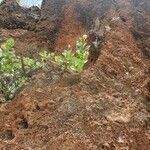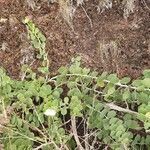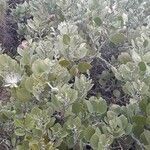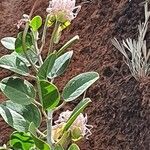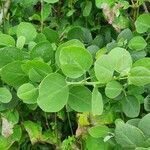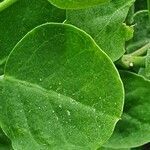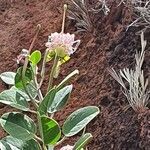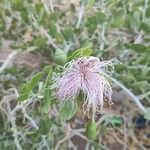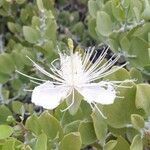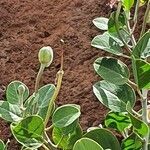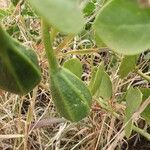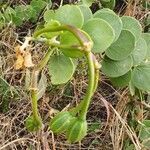Spreading or scrambling shrub, 0.5–4 m. high.. Young twigs densely appressed-white-pubescent, glabrescent.. Leaves petiolate; blade broadlyelliptic, ovate or orbicular, 2–5.5 cm. long, l.8–5(–6) cm. wide, acute, rounded or slightly emarginate, with the midrib ending in a small recurved spine, broadly cuneate, rounded or cordate at the base, chartaceous, glabrous; petiole 9–25 mm. long.. Flowers solitary in the upper leaf-axils; pedicels stout, 3.5–12 cm. long.. Sepals unequal; 3 oblong-obovate, shallowly boat-shaped, about 1.5–2 cm. long; the other sepal up to 4 cm. long, strongly hooded at the apex.. Petals unequal; anterior pair oblong-obovate, up to about 1.5 cm. long; posterior pair apparently fused, about 3.5 cm. long, 2.5 cm. wide, hooded and enclosed in the hooded sepal, the base clawed and with 2 elongate calluses; all petals white, glabrous or thinly pubescent.. Stamens many, about 3 cm. long.. Gynophore 3–4 cm. long in flower, up to 6 cm. and stout in fruit.. Fruits ovoid or ellipsoid, up to 5 cm. long, 3 cm. in diameter, ribbed, red.. Fig. 10/3–6.
More
A scrambling shrub. It can hang from rocks. It is fleshy with short crooked branches. It can grow to 4 m high. The leaves are oval and 2-6 cm long by 2-6 cm wide. They are fleshy. The flowers occur singly in the axils of leaves. They are large and white and unequal. The flowers stalk is stout and 4-5 cm long. The fruit is oval and 3-5 cm long and 2-3 cm wide. It can be reddish and ribbed. It has many seeds in a pulp.
